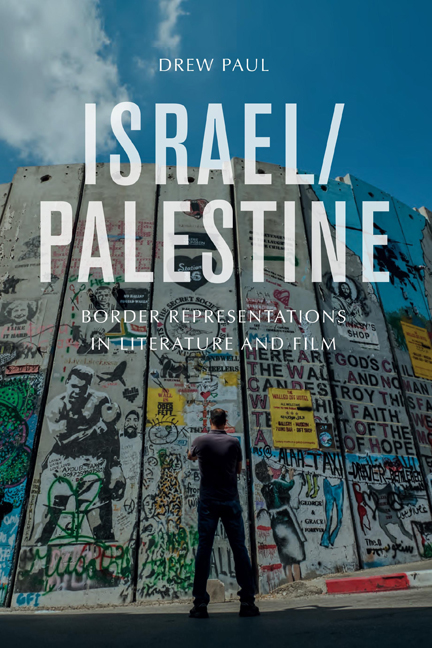7 - Conclusion: Physical and Fictional Borders
Published online by Cambridge University Press: 08 October 2020
Summary
In 2005, the globally active British graffiti artist known as Banksy painted several murals on the wall in the West Bank. These murals, referenced in Suad Amiry's passage on crossing the wall in Nothing to Lose But Your Life discussed in Chapter 1, depict various means of passing through the barrier, either by cracking it open, peering through it, or climbing over it with a ladder. The murals use the material space of this barrier as a canvas to critique its construction and presence and to imagine alternatives to it. Yet this type of transformation of the cold concrete of the wall into a dissident political statement does not in itself produce a tangible means of contesting the border‘s physical presence. Banksy later wrote on his website about his experience painting the murals, and he described an encounter with an old Palestinian man who said his painting made the wall look beautiful. Banksy responded to this compliment with a thank you. But then the man continued and said to Banksy, ‘We don't want it to be beautiful, we hate this wall. Go home.‘ This man feared that utilising the wall for aesthetic purposes would at best distract from the desire to tear it down and at worst actually render it more tolerable and therefore more durable. For him, the aestheticisation of the wall would obscure the basic, ugly fact that it is an unwanted monstrosity imposed by an occupying power in order to control and prevent Palestinian movement. Responses to Banksy's most recent West Bank project – a fully operational, wall-adjacent hotel in Bethlehem with the ‘worst views in the world’ named ‘The Walled Off Hotel’ (a word play with the luxury Waldorf Hotel chain) – echo the Palestinian man's earlier comments on the murals, with Banksy facing criticism for promoting conflict tourism and for profiting from Palestinian sufferring.
I begin my concluding chapter with this anecdote because it is a further example, seen repeatedly throughout this book, of anxiety over the representation of borders.
- Type
- Chapter
- Information
- Israel/PalestineBorder Representations in Literature and Film, pp. 186 - 191Publisher: Edinburgh University PressPrint publication year: 2020



